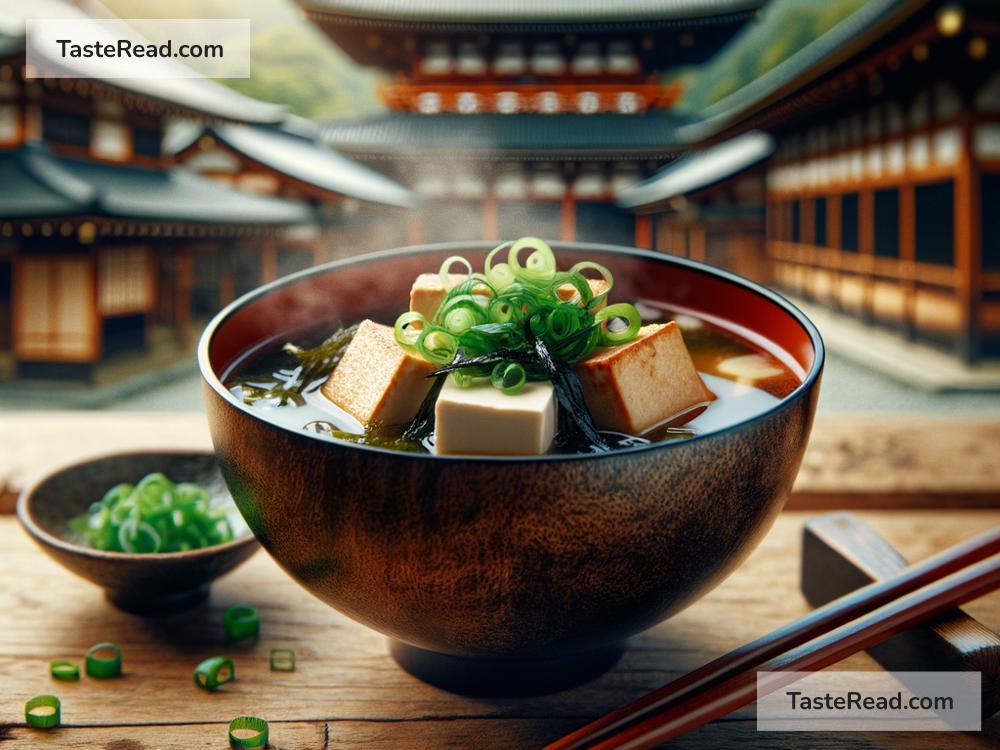Exploring Rich Miso Soup Traditions in Kyoto, Japan
When you think about Japanese food, one of the first things that comes to mind is miso soup. This humble dish is more than just warm comfort food; it’s a window into Japanese culture and traditions. In the ancient city of Kyoto, miso soup takes on a special meaning, carrying centuries of history and unique flavors. Let’s dive into the world of miso soup to discover how it is enjoyed in Kyoto, a city known for its deep connection to food and tradition.
What is Miso Soup?
Miso soup is a simple dish made with miso paste, which is fermented soybean mixed with salt and koji mold. This paste dissolves into hot broth, creating a rich and savory flavor. Other ingredients, like tofu, seaweed, green onions, and vegetables, are added to complete the dish. It’s eaten daily by people across Japan, often as part of breakfast, lunch, or dinner. Although miso soup may seem basic, it has deep cultural roots and varies widely depending on the region and family recipes.
Kyoto’s Unique Take on Miso
Kyoto is famous for its refined food traditions, and miso soup here is no exception. The city has a rich food culture inspired by its role as Japan’s capital for over 1,000 years. During this long history, Kyoto developed delicate and elegant flavors that reflect its peaceful atmosphere and love for seasonal ingredients.
Kyoto miso soup often features light yet flavorful miso pastes, sometimes made from white miso. White miso is sweeter and milder than other types, and it’s a favorite in Kyoto’s kitchens. Many recipes also incorporate local Kyoto vegetables, like shogoin daikon (a type of radish), takenoko (bamboo shoots), and kyo-yasai (Kyoto heirloom vegetables). These fresh, seasonal ingredients give Kyoto miso soup its distinctive character.
The Role of Miso Soup in Kyoto Cuisine
Kyoto cooking focuses heavily on balance, simplicity, and seasonal flavors, and miso soup embodies all of these elements. In traditional Kyoto cuisine, called “Kyo-ryori,” meals are designed to complement the seasons and present food in harmony with nature. Miso soup plays an important role in this philosophy. It is served alongside rice, pickles, and other small dishes to create a balanced and nutritious meal.
One special type of Kyoto miso soup is “Saikyo miso soup,” made with a pale, sweet miso paste that originated in the city. This soup has a velvety texture and a lighter taste, making it perfect for pairing with Kyoto’s delicate dishes like yudofu (boiled tofu) or seasonal vegetables. Saikyo miso is also used in many Kyoto recipes beyond soup, such as fish marinades and sauces, showing how central it is to the city’s cuisine.
Celebration and Spiritual Roots
Miso soup is not just ordinary food in Kyoto; it carries spiritual significance too. In temples and Zen monasteries throughout the city, miso soup is part of “shojin ryori,” which is Buddhist vegetarian cuisine. Shojin ryori focuses on simplicity and doesn’t use meat or strong flavors like garlic or onions. The miso soup served in temples often contains tofu, seaweed, and root vegetables, nourishing both the body and soul.
During festivals or special occasions in Kyoto, you’ll find miso soup served in meaningful ways. For example, during the New Year’s holiday, families prepare “ozoni,” a special soup with mochi rice cakes and miso or soy-based broth. In Kyoto, the miso used for ozoni is often white, creating a sweet and welcoming flavor. This dish symbolizes luck, prosperity, and togetherness as people celebrate the New Year.
Cooking and Enjoying Kyoto Miso Soup
If you visit Kyoto, you’ll notice miso soup served at every meal, from traditional inns (ryokan) to centuries-old restaurants and even casual cafes. Travelers often enjoy Kyoto miso soup as part of multi-course meals called “kaiseki,” which are carefully arranged and beautifully presented. Kaiseki meals highlight the best of seasonal Kyoto ingredients, and miso soup is typically the finishing touch, leaving guests warm and satisfied.
For those who want to learn how to make Kyoto-style miso soup at home, cooking classes in the city teach visitors how to prepare this dish using local ingredients and techniques. Participants learn to mix different types of miso paste, create delicate dashi (broth), and balance flavors just like Kyoto chefs do. It’s a wonderful way to bring back a taste of Kyoto to your own kitchen.
Experiencing Kyoto Through Miso
Exploring miso soup traditions in Kyoto is a delightful way to connect with Japan’s culture, history, and flavors. From elegant Saikyo miso to temple-style vegetarian soups, the variety is astonishing. Each bowl reflects Kyoto’s love for balance, beauty, and respect for seasonal ingredients.
Whether you’re enjoying miso soup at a quiet Zen temple, a bustling Kyoto restaurant, or a homely ryokan, it’s a reminder of the city’s timeless charm. So, the next time you sip miso soup, let it transport you to Kyoto—a place where food and tradition come together in perfect harmony.


